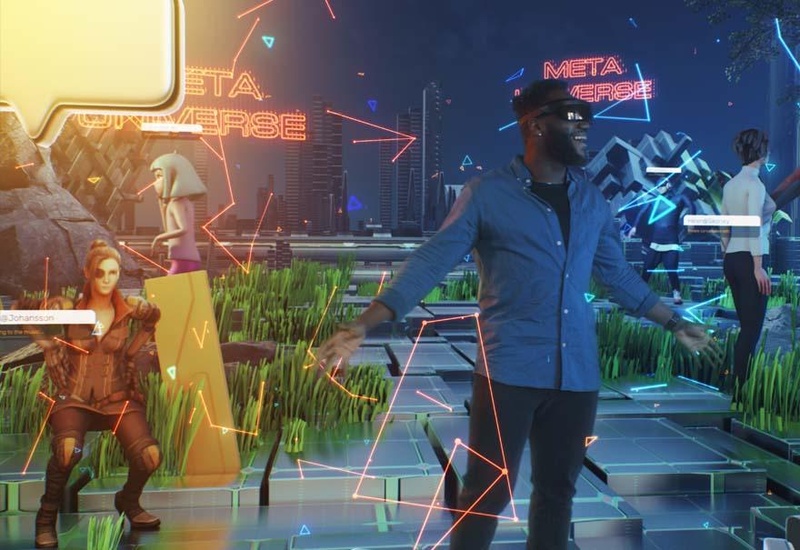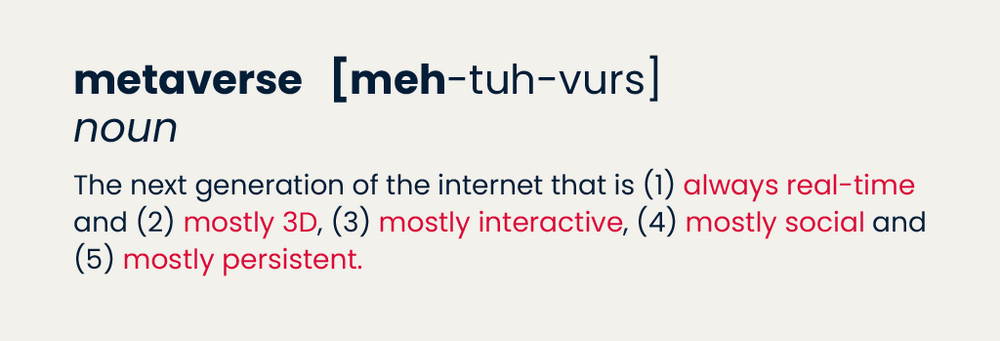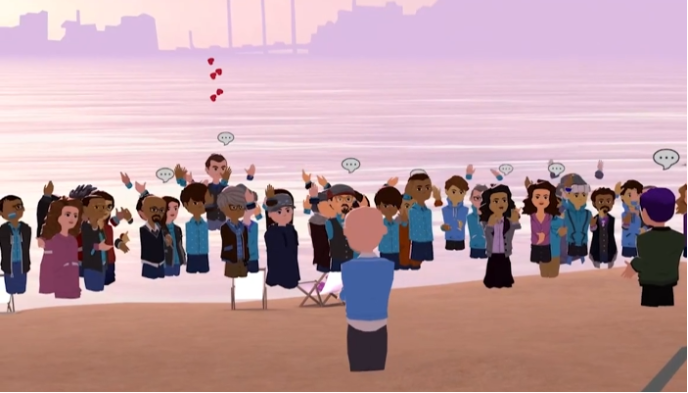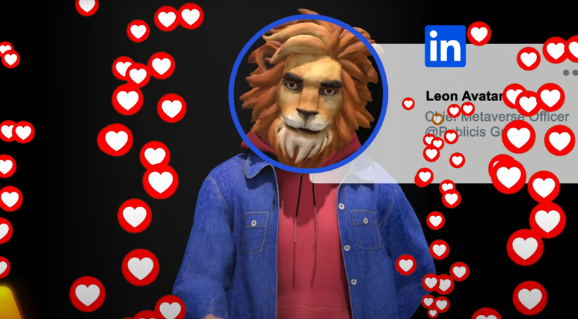The burning questions L&D should be asking about the metaverse.

Meh.
Are we sick of the word ‘metaverse’ yet?
It swims around the web (Web2 that is), elbows its way into conferences (“so, you’ve probably heard a lot of talk about metaverses”), and on the rare day an L&D professional gets 5 mins, it reaches up, taps them on the shoulder and asks, ‘hey, what are you doing about me?’ to which most reply, ‘nothing. I’m too busy!’
That’s right. Amongst L&D professionals, there’s a sense that the M-word can be a distraction from the myriad of other priorities they face, from strengthening relationships with the C-Suite, to embedding learning culture, to upgrading skills-matrices, to implementing analytics, to promoting diversity and wellness. It’s non-stop.
But that doesn’t mean the metaverse is going away – in fact, it’s getting real.
If you find yourself wondering about the metaverse and what it may hold for learning, grab a cuppa, and read on as we address the headline questions.
What is the metaverse?
A definition we like has been shared by Tony Parisi, an early pioneer and former head of AR/VR at Unity, who explains it simply as:
‘The metaverse is the next significant development in global communications.’
Great. So, what does that look like?
Well, let’s look at some characteristics, explained by another Unity stablemate, John Riccitiello, who, incidentally, is anything but ‘meh’ about the metaverse:

Hmm. Stick with me. A lot of buzzwords there.
- Real-time means it isn’t canned, like a movie, shot and locked. It’s live now. You’ll see a view of the world that’s unique to you at any moment, based on what you do.
- Mostly 3D means it is spatial, mimicking (or re-envisioning) physical world space, populated with objects, environments, and avatars.
- Mostly interactive means that we (or our avatars) can pick up and handle objects, talk to each other in real time, and respond to simulations.
- Mostly social enables us to meet other avatars from anywhere in the world, to collaborate, have fun, and learn (ah-ha!) together.
- Mostly persistent means that if we made a mess someplace virtual yesterday, that mess is still ready to greet us when we return. ‘Persistent’ keeps score of your actions and adds to that sense of reality.
How can I access the metaverse?
You’re keen!
One way to experience metaverse worlds, or destinations, is via a virtual reality headset, like the Meta Quest.
Whoa! That’s right Mark Zuckerberg is behind this whole thing, isn’t he?
Not quite. Let’s come back to that in a minute.
Accessing a world or destination via a virtual reality headset isn’t the only way. Developers are making sure that you can attend metaverse events on desktop and mobile, which increases adoption, although limits the quality of presence – that sense of really being ‘there’.
Additionally, there will be real world augmentation which we’re already familiar with, using augmented reality to bring experiences to us, from virtual jewellery, to trying on clothes, to identifying plants in a garden.
Where are these metaverse worlds?
There are several large players in the metaverse; Decentraland, Cryptovoxels, Somnium Space, Upland.me, and The Sandbox.
In fact, you can go to Voxels (Cryptovoxels) right now and wander around, it’s akin to a game world you can access right in your browser.
And if you’re feeling a little more adventurous you can visit the Museum of Other Realities and catch an exhibition.
But there are also many social worlds to try, like AltSpace, Horizon Worlds, Multiverse, and Spatial. These can be customised to create your own corporate environment for meetings, presentations, and collaboration.

Who am I in the metaverse and is it safe?
For many experiences, you’ll need an avatar to participate in the 3D world. You can create your own in something like Ready Player Me, which makes it possible to show up as the same avatar across different worlds and interact, chat, and gesture in real time (remember – it’s mostly social).
Both Microsoft and Meta are investing in avatars, with the former introducing 3D representations into Teams, and the latter opening up a shop to buy clothes for your digital doppelganger.
Safeguarding is a critical aspect of identity in the metaverse since avatars can be exposed to unmediated content and interactions. Guidelines are already being drafted to advise policymakers on keeping the virtual world and its inhabitants safe.
Speaking of Meta, isn’t Mark Zuckerberg behind this whole metaverse thing?
Oh, that’s right, you asked before. Let’s bottom this out.
Last October, Facebook renamed itself Meta, setting out its vision for a digital future and shifting the focus of its 100,000 employees to finding new ways we will work, live, and play in the metaverse.
Estimates suggest that 10m Meta Quest headsets were shipped in 2021, outstripping nearest competitor Sony Playstation’s PSVR offer by 1.5x. This is significant because it’s emerging as the dominant device in the market at an affordable price, and the more people that have them, the more immersive experiences we’re likely to try.
Zuckerberg has succeeded in popularizing a vision for the metaverse, but he doesn’t own it, because one critical tenet of the metaverse is that it’s #decentralised.

What do you mean ‘decentralised’?
If we think about the current nature of the web (Web2), it’s dominated by giant players that leverage data as an asset for profit. This is centralised.
By contrast, the vision of the metaverse is that it will be, by design, decentralised, owned by no one, and accessible to all.
Sure, there will be economies in the metaverse, things to buy, and people who sell, but the big difference is that people will own their own data, identity, and assets, and this will be portable to take anywhere they want, made possible by the underlying blockchain infrastructure and tokenomics.
Wheels within wheels! Enough. Tell me about learning in the metaverse.

IMAGE: Accenture onboarding. Fortune
OK. Buckle up.
- In education, ‘metaversities’ have been piloted in the US, where digital twins, or near-exact replicas of an educational campus (or ‘metacampus’) are brought to life in 3D, offering live, synchronous, and asynchronous lectures. These VR courses increased student final grade averages, presentation morale, and attendance by 10% from the previous year, up to 94%.
- For personal and professional growth, languages are being trained in virtual space, facilitating fluency through cultural and contextual interactions with small groups.
- In industry, Toyota Material Handling has been using VR to onboard service technicians in the complex inventory in a collaborative, multi-player setting. This runs alongside existing training and enhances the TMH offer by enabling all staff access to all machines, regardless of location - impossible IRL.
- In aviation, haptic gloves and VR have found a happy marriage creating a more tactile, realistic aircraft training simulation for pilots.
- Using the metaverse to nudge behaviour, Pfizer encouraged young people in Brazil to get vaccinated during the pandemic inside Grand Theft Auto (GTA V), and Carrefour created a ‘Healthy Map’ to inspire positive food choices inside a Fortnite game.
- In automotive, Nissan has created a virtual dealership to meet customers for the launch of its new Sakura model, including a virtual test drive, using VRChat. Although this has not been used as a sales representative training home (as far as we know), it’s a small leap to use the environment for sales and product training.
- In pharmaceutical, the Johnson & Johnson Institute targeting training for healthcare professionals is empowering surgeons to learn the latest procedures.
- In finance, Bank of America has rolled out VR training to over 4,300 centres worldwide, enabling teammates to practice tasks and simulate client interactions.
- In professional services Accenture has launched an onboarding for its 100,000 new employees, where new hires can play learning games, explore exhibits and participate in team-collaboration.
And this is just a handful of examples, there are likely to be many more across sectors and in the pipe.
How are organisations responding to the metaverse?
Seriously. From Disney to Nike, there’s been a feverish appointment of ‘Chief Metaverse Officers’, including Publicis Groupe’s charismatic ‘Leon’ lion avatar.

IMAGE: Publicis Groupe appointed a virtual Metaverse Officer, a lion. Publicis
Brands are diving headfirst into this virtual playground, experimenting with Mworlds. For instance, BMW recently launched the Miniverse, Fender has invited players to a gamified Stratoverse (that’s right, it’s a portmanteau of Stratocaster and metaverse), and Heineken launched a ‘mock’ beer at a virtual brewery in Decentraland.
Tommaso Di Bartolo, co-author of Navigating the Metaverse1 is unequivocal. “The metaverse will deliver more products and services and revenue…based on a workforce that is bigger than the real world [and] we will develop the future of the workforce and the future of learning in the metaverse.”
Dizzying. What can I do in L&D to get ahead?
With brands throwing themselves into the metaverse, chances are your organisation may already be looking into it to develop new ways of interacting and connecting with customers.
Learning and social collaboration are BIG use cases for virtual and immersive experiences, and if you’re just at the start of your journey – now’s the time to enjoy it!
Here are some dos and don’ts to help you step into the metaverse:
Do try it out. Maybe you have kids that can show you Roblox, Fortnite, or Minecraft, or teammates that can invite you into Spatial, VRChat, or Horizon Worlds.
Do stay curious. It may not seem obvious how these experiences directly translate into learning applications, and that’s OK. Exposing yourself to a peppering of immersive showcases will start the creative cogs whirring.
Do share your experiences. However weird (VRChat), or wonderful (Museum of Other Realities) the experience, be sure to share it with your co-workers – either in the moment or afterwards. Be the leader that spearheads discussions around the merits, pitfalls, and possibilities of MV experiences.
Don’t wait. Embracing the wave now by becoming familiar with terms, technologies, and experiences will stand you in good stead when the next onboarding, skills training, or collaborative project comes around.
Don’t assume it’s costly. Many of the technologies have a low barrier to entry, meaning you can test things out with small groups for a low cost before venturing into tech investments or asset creation.
Don’t let barriers deter you. There are going to be things to figure out, from personal safety in virtual space, to data sovereignty, to growing your lexicon of new terms. Pin it to address as the needs arise.
1: Hackl, C., Lueth, D. and Di Bartolo, T. (2022) Navigating the Metaverse: A Guide to Limitless Possibilities in a Web 3.0 World. Hoboken, New Jersey: John Wiley & Sons Inc.